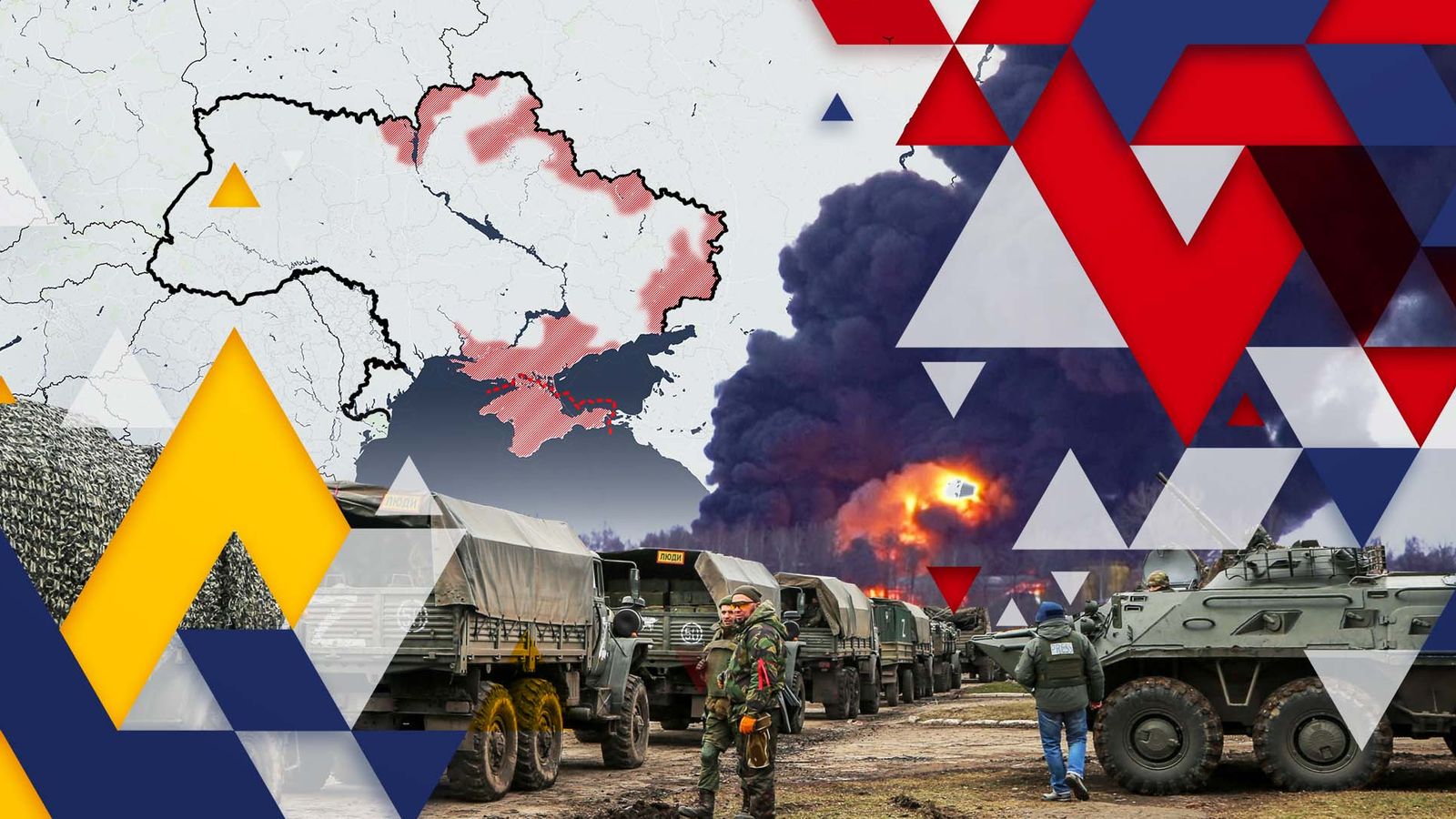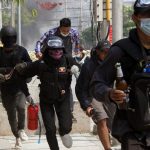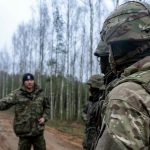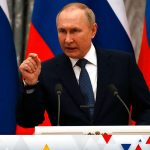The war in Ukraine entered its third week with Russian forces continuing to shell urban areas, including the besieged city of Mariupol.
Here are the other key updates from the war in Ukraine:
• Kyiv remains under Ukrainian control
• Efforts to move people to safety continue
• An intelligence update from the UK’s Ministry of Defence reported “a notable decrease in overall Russian air activity over Ukraine in recent days”
This map shows the current situation in Ukraine.
The east
More than 1,200 bodies have been “collected on the street” in Mariupol, according to Sergei Orlov, the deputy mayor of the southern port city.
He told the BBC that 47 people were recently laid to rest in a mass grave when it became impossible to reach burial sites.
Local officials also said Russian warplanes were still attacking the city, a day after an airstrike on a maternity hospital.
Today Ukrainian President Volodymyr Zelenskyy said three people were killed in the hospital attack, including a six-year-old girl.
The port city has been under siege for 10 days and remains under Ukrainian control, but has been a key focus for Russia.
Russian news agencies today quoted the country’s defence ministry spokesman as saying the army had taken control of a number of Mariupol’s neighbourhoods.
New satellite images capture areas of the city before and after they were shelled.
The images include this residential area.
As well as this shopping centre.
The battle for Kyiv
Artillery fire was heard on the western edge of Kyiv after a “rather difficult” night on the outskirts of the city, deputy interior minister Vadym Denysenko said.
West of Kyiv, bombs fell on two hospitals. The mayor of Zhytomyr, a city of 260,000 people, said one of them was a children’s hospital but there were no injuries.
Overall, Russia continues to make slow progress on Kyiv, according to an intelligence update from the UK’s Ministry of Defence.
It stated that the large Russian column north west of Kyiv remains stalled and is “suffering losses at the hands of the Ukrainian Armed Forces”.
Air Marshal Philip Osborn, former chief of UK Defence Intelligence, told Sky News Russia has been continuing its advance to the east of Kyiv with “some success”.
It is an area where Russia has confirmed it is using the TOS-1A thermobaric weapons system.
Mr Osborn explains: “This is a multiple launch rocket system…[that] produces a vastly larger conventional blast effect when it lands in built-up areas or wherever.”
He added: “From a law on armed conflict perspective it is not illegal but it should be used against military personnel… [but] if Russia uses this in built-up areas that is against the law on armed conflict.”
The Russian advance in the east is not without fight-back from Ukrainian forces.
Today Sky News verified a video to the outskirts of Brovary, north-east of Kyiv, which shows a number of Russian military vehicles suffering heavy damage.
Please use Chrome browser for a more accessible video player
Military experts have told Sky News a TOS-1A weapon system appears to be among the convoy, as highlighted in this screenshot.
The humanitarian situation
President Zelenskyy said today that 65,000 civilians have managed to leave heavily hit parts of the country during temporary ceasefires so far.
The humanitarian corridors today were proposed for Mariupol, Volnovakha, Izium, Sumy, Trostianets and Krasnopil.
Evacuations were also being attempted from a number of towns around Kyiv, including Bucha, Borodyanka, Irpin and Hostomel.
However not all these routes are proving safe.
A humanitarian convoy trying to reach Mariupol was forced to turn around due to fighting, Ukraine’s deputy PM said.
Russian troops have also reportedly blocked Ukrainian civilians from leaving territory under its control in the eastern Ukrainian town of Izyum today, regional governor Oleh Synegubov said.
The UN estimates more than 2.3 million people have fled the country, the biggest exodus of refugees in Europe since the Second World War.
The south
Russian activity in the south remains slow, with some advances increasing around the city of Mykolaiv following heavy fighting.
Kherson remains the only city under Russian control.
The key port of Odesa remains under Ukrainian control.
What’s happened so far?
– Day 1: Russia launches full-scale invasion
– Day 2: Russian forces reach Kyiv
– Day 3: Ukraine fights back in Kyiv, Russia gain in the south
– Day 4: Kyiv holds strong, heavy fighting in Kharkiv
– Day 5: Convoy grows around Kyiv as refugees flee
– Day 6: Cluster bombs hit Kharkiv
– Day 7: Civilian casualties mount
– Day 8: Mariupol is isolated as Russian forces create land bridge
– Day 9: Russian forces target Europe’s largest nuclear power plant
– Day 10: Ceasefire violated in Mariupol as bombing continues
– Day 11: Russia prepares Kyiv for advance and how energy could be a key battle
– Day 12: More humanitarian routes opened as bombing continues in Kyiv suburbs
– Day 13: Civilians successfully evacuated – but has Russian advance stalled?
– Day 14: Children’s hospital bombed, civilian evacuations continue and acts of defiance.
Sky News is using daily assessments published by the Institute for the Study of War and AEI’s Critical Threats Project to indicate which parts of Ukraine are under control by Russian troops.
From 2 March, these daily assessments distinguished between areas of Ukraine controlled by Russia and areas of assessed Russian advances (where Russian troops are believed to be operating but not in control).
Other sources for Russian advances include the UK Ministry of Defence.
Sky News is verifying all social media videos and stills before use.
The War in Ukraine is a rapidly developing story. While we endeavour to keep all our data and maps up to date, there might be times when the latest changes have not yet been reflected in the maps.
The Data and Forensics team is a multi-skilled unit dedicated to providing transparent journalism from Sky News. We gather, analyse and visualise data to tell data-driven stories. We combine traditional reporting skills with advanced analysis of satellite images, social media and other open source information. Through multimedia storytelling we aim to better explain the world while also showing how our journalism is done.






















